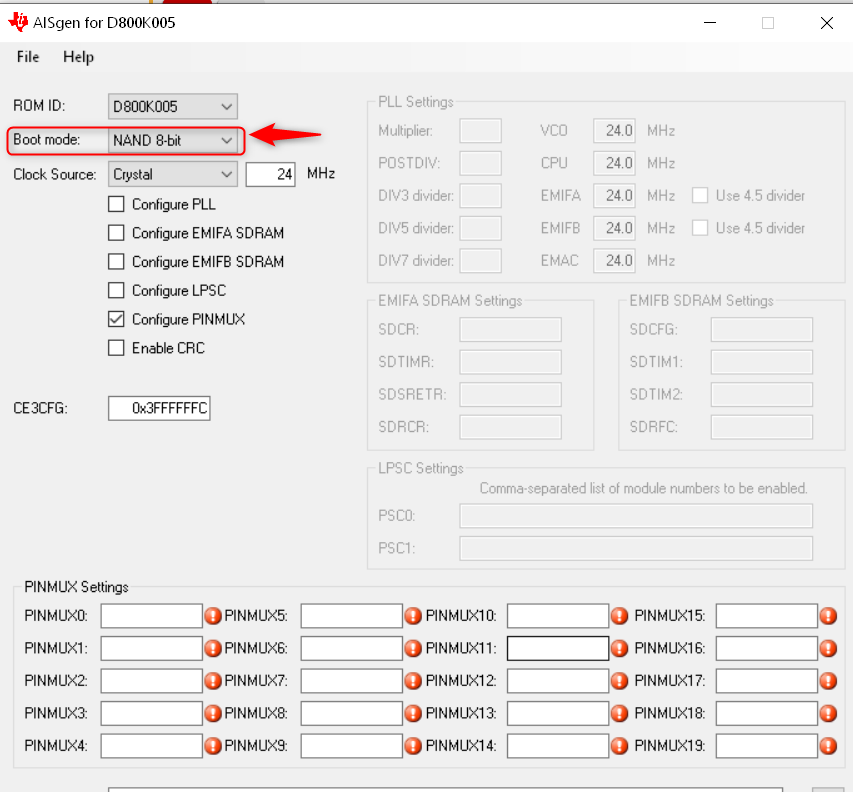Other Parts Discussed in Thread: OMAP-L137
Hi, I am trying to get setup for a standalone boot. I have a NAND 8 bit flash on EMIFA CS3 (device ID 0xDA). I have compiled the serial flashing / AIS tools successfully, and can now successfully erase / program the flash device (confirmed by reading back with some code loaded by XDS110).
I find that if the flash device is just erased then upon booting I get the bootrom error status "Peripheral open failed".
But when programming my AIS image then I get the bootrom status "Invalid AIS keyword".
This implies to me that I am definitely programming the image to the correct location, and that the bootrom is fetching AIS from the correct device etc.
I can see the AIS commands in the generated file, and they seem to be sensible according to the bootrom documentation (sprab04g).
I have tried stripping down my AIS .ini file such that there are no other AIS commands than just section load, but I still get the "Invalid AIS keyword" error.
Can this be some sort of endian issue?
What would be the next step with trying to debug what the bootrom is actually fetching? I can see the stack contents when the bootrom comes to a halt. Will it have fetched a chunk of data from flash to the stack somewhere?
I am using OMAP-L137_FlashAndBootUtils_2_40
Many thanks,
James



